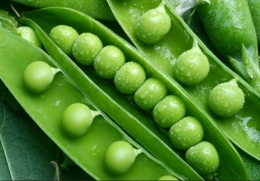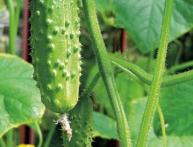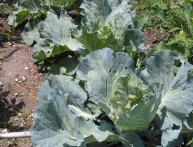Useful properties of green peas. Pea varieties

Pea cultivation was widespread in the ancient world. In France, a dish of peas with fried lard could be found both on the table of the king and on the table of the commoner, so beneficial properties of green peas obvious.
Green peas are eaten fresh and canned, and ripe fruits are processed into flour or cereal.
The beneficial properties of green peas include a large amount (up to 7%) of essential protein, sugars (up to 7.5%), starch, and fat. The best varieties of green peas contain up to 45% or more amylose in their seed starch. The process of ripening peas reduces the percentage of sugars and increases the percentage of protein and starch.
Green peas are superior in citric acid content to potatoes. Compared to wholemeal bread, which is richer in vitamins than high-grade bread, peas contain 5 times more vitamin PP, B - 2 times, B2 - 1.5 times. Raw green peas are high in essential amino acids, although cooking reduces them by almost half. The calorie content of peas is 1.5-2 times higher than that of potatoes and other vegetables.
The beneficial properties of green peas are determined by their high selenium content, which allows them to be used as anticarcinogenic agent. It blocks the entry of radioactive metals into the body.
There are such varieties of peas
- sugar peas are eaten whole; they have a sweet taste
- brain peas contain a large amount of sucrose; they are used for making canned food; they are not suitable for cooking because they do not soften during heat treatment.
- dried shelling peas are used for boiled dishes








